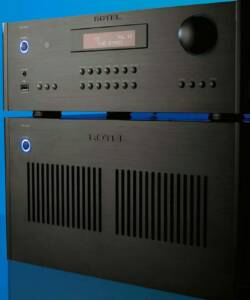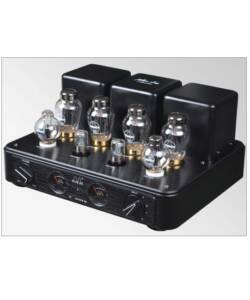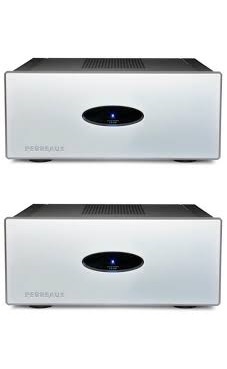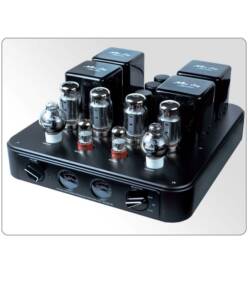Line Magnetic LM-211IA integrated tube amplifier (2x32W)
Original price was: R62,000.00.R19,000.00Current price is: R19,000.00.
Line Magnetic LM-211IA integrated tube amplifier
Introduction
I postponed writing this review for quite some time, being aware that reviewing component I own and use as a reference might not be very useful to the reader. I mean LM-211IA is the best amplifier I’ve ever had in my system and since I’ve never heard anything better, I have nothing other to say but to apologetically prize its virtues and express my positive feelings toward its performance. This I guess might be pretty boring to read and that’s why I was thinking to write this review once I stumble upon an amplifier that outperforms it so that I could have a critical point. But it happened so that Srajan offered me to write this review as my first contribution to the 6moons magazine and I had no choice but to comply.
You have to know dear reader that I am novice here and all the audiophile thing developed pretty rapidly in my case starting less than two years ago, so I am not the most experienced guy with bunch of amplifiers behind my back. Truth be told, comparing my former Creek Evolution 50A solid-state amplifier with the beast I am going to review now is like comparing a shot taken with my iPod Touch against one taken with the semi-professional Nikon DSLR camera I use – graininess, limited dynamic range and poor saturation against detail resolution, dynamic contrast and vivid tone colors. Or put it another way – it is like comparing a printed reproduction with a real oil on canvas painting. So I don’t want to enter into detailed comparison here where the differences are as substantial, and I can’t because I already sold the Creek year ago after the acquisition of LM-211IA.
At the moment I have no other amplifier at disposal so I can’t tell how it compares against other amplifiers on the market. Furthermore I have only one pair of speakers and that’s why I can’t predict how it will behave with different reactive loads. So this review simply can not be examination of component being tested against several opponents, where virtues and deficiencies have been assessed in direct comparison. What I can do is to give you some general information and describe my impressions of this amplifier serving as a link between my digital source based upon SoTM sMS-200 network player feeding AMR DP777 digital processor and the Art of Sound’s back-loaded horn speakers BK108 fitted with Fostex FE 108-Sol full-range drivers.
Line Magnetic Audio
As an audiophile and beginner writer it is part of my daily routine to check out what other people have written, so I consume a great deal of audio gear reviews, opinions and reports and by doing so the name Line Magnetic Audio fell somehow naturally into my sight. I first stumbled upon some RMAF and Salon Son & Image (SSI) show reports from 2012 where it was mentioned that DeVore Fidelity presented its range of ape-named speakers partnered with Line Magnetic amplifiers and that the overall impressions of this combination were rather positive. Later on I discovered even more intriguing things happening here in Germany where I reside.
It was in 2012 Munich High End show when Keith Aschenbrenner from Auditorium 23 introduced his new line of speakers which have been designed with Line Magnetic drivers instead of the old PHY-HP ones. What followed was that Auditorium 23 “PHY” speaker line was disbanded in favor of the new “Hommage” line featuring Line Magnetic replicas of the famous Western Electric WE 755 8″ full-range driver. The replicas not only looked exactly the same but according to Aschenbrenner they performed in the same league being able to deliver the legendary Western Electric magic from the 40ies.
It turned out that here in Germany Line Magnetic Audio was represented by two of the most credible people in the high end branch – Keith Aschenbrenner from Auditorium 23 distributing the speakers and Claus Jäckle from AcousticPlan offering the amplifiers and the rest of the electronics. It became obvious that the founders of Line Magnetic Audio – the brothers Zheng Cai and Zheng Xi – were not joking but taking things pretty seriously by spending great amounts on research and analysis of the materials used during the WE production era.
Checking it out
As I’ve already said my former solid-state Creek Evolution 50A amplifier was a rather poor performer especially when paired with my single driver crossover-less speakers, which are rather revealing. I was able to discern the graininess of the images, the poor dynamic contrast and the greyish monotony, which the lack of tone saturation was imposing. It was likely for a tube amplifier to partner better with full-range horn speakers and that’s how LM-211IA fell into consideration. Though my attitudes were more into the direction of single-ended triode amplification, the most affordable SET back then – the model LM-218IA (2800 EUR), a lighter version of the widely renowned LM-518IA 845-tube SET amplifier – was beyond my reach. At the same time LM-211IA (1400 EUR) EL34-tube push-pull amplifier featuring switchable triode and ultra-linear mode of operation and point-to-point wiring was appealing strongly to me. I realized that in this price range one just can not dream for a hand-wired amplifier utilizing quality parts in a rather decent looking and solid body. It is the most affordable of the classic range lineup followed by the model LM-216IA (1600 EUR) KT88-tube version with similar topology and characteristics but more power. There is also a premium line of amplifiers consisting of exotics like the two chassis LM-845 Premium integrated, which comprise in one chassis the main amplifier with tubes, coupling driver transformers and power supply while in another the output transformers and speaker output parts – quite some interesting concept by the way.
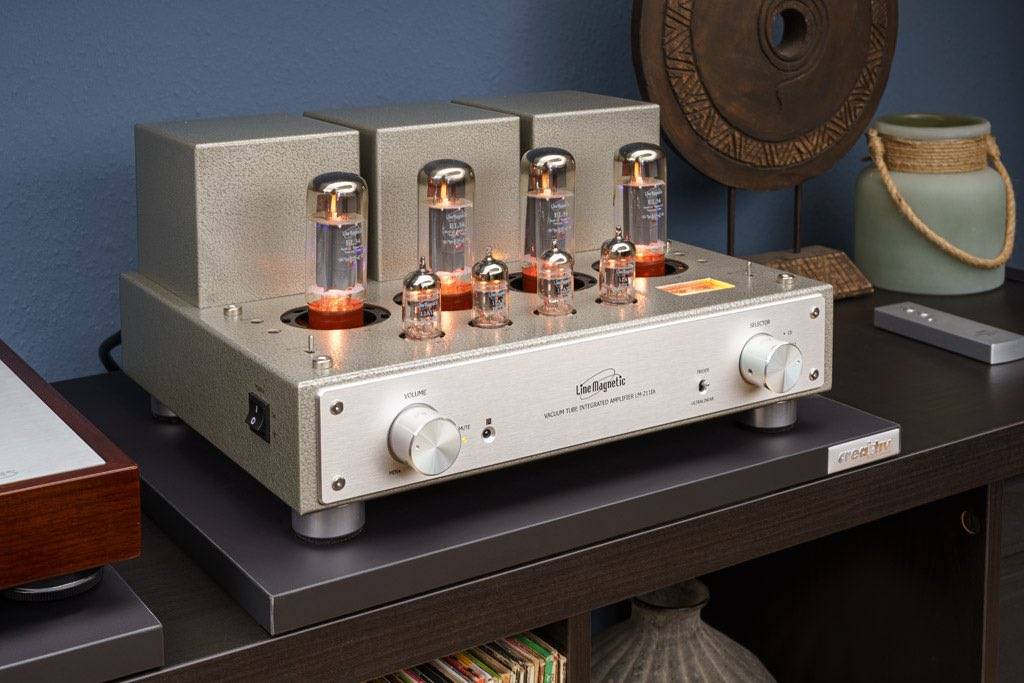
Technical description and User interface
LM-211IA is a three stage class AB push-pull integrated amplifier delivering 15 watts per channel in triode and 32 watts per channel in ultra-linear mode. Preamplifier stage consists of pair 12AX7 double triodes used for voltage amplification while the driver stage is realized with pair of 12AU7 double triodes for splitting the signal and driving the output tubes. Output stage consists of two pairs of EL34 pentodes in push-pull configuration for power amplification. Wide bandwidth EI output transformers are used for matching the high impedance of the output stage to the low impedance of the speaker taps. Power supply relies on a specially designed EI transformer combined with solid state, choke filtered rectification. Though the internal wiring is point-to-point handmade construction there are few PCBs for realization of more complex functionality like the triode/ultra-linear switch, which makes use of electrical relay switches for each channel, the soft start and time-delay circuit and the ALPS volume control servo automation. The amplifier has a classic layout with tubes in front and shielded transformers in the back and facilitate short electrical paths for reducing emission of hum and noise into the chassis. Nichicon and Realcap capacitors have been used.
The amplifier comes with remote control for volume adjustment and mute function. On the front aluminum plate are located two knobs for volume and source selection as well as switch for choosing between triode and ultra-linear mode of operation. There is also a status indicator light with two states – blinking and constant light. Blinking light indicates either mute state or time-delay function in progress, which is executed every time the amplifier has been switched on, for protecting the tubes. It takes around 30 seconds until the cathode of the output tubes reaches its optimal temperature and the amp is ready to go, which is indicated by constant light of the indicator. The sturdy power On/Off switch is located on the left side. At the back there are four pairs of gold-plated RCA jacks, three quality speaker terminals per channel with designated 4 and 8 ohm taps and power socket with main fuse. On the top plate there is an ampere meter for displaying the bias current of the output tubes as well as pair of switches for choosing between the four tubes which bias current has to be measured. There are also two pairs of potentiometers for adjusting the bias of the corresponding tube by means of screwdriver.
Listening Impressions
Within the limitations of its design – class AB with the necessary negative feedback circuit and solid state rectification – I would say this amp has surpassed my expectations. It delivers a great deal of midrange magic typical for DHT class A amplifiers and in the same time has no deficiencies in the frequency extremes. Bass is authoritative and controlled with a great sense of weight, heights are sparkling and sharp with very fine grain. Giving one of my favorite guitar/vocalist combinations Joe Pass and Ella Fitzgerald a go with their fourth and final release Easy Living I must admit I gave up trying to concentrate on analyzing reproduction traits, the performance is so overwhelming that I have surrendered to the sheer timbral richness of Pass’ D’Aquisto guitar and Ella’s emotionally matured voice.

Listening to another beautiful dialogue, this time between the voice of Eleonora Bianchini and the double bass of Enzo Pietropaoli (In Sight), confirms my notion that dynamic agility and soundstaging are some of the main virtues of this amplifier. Depending on the speaker taps being used these qualities might slightly differ. When paired to the 8 ohm taps the Fostex FE 108-Sol speakers tend toward the lean, more analytical side, showing greater micro-detail retrieval and more compact images. Contrary the 8 ohm taps deliver more energy and larger soundstage, creating the impression that the amplifier has more power. Though the micro-details are not as sharp, there is a feeling of more inertia and longer decays which makes the presentation a bit more fluid and musical, but at the same time not as natural.
Generally full-range speakers are not very good at transducing complex music, this is simply because a single driver has to follow the extremes of the entire frequency spectrum from top to bottom, which means a lot of cone excursions that might bring the driver to non-linear behavior and higher levels of distortion. Having this in mind I abstain from judging if the amplifier can keep pace with complex musical passages or not, simply because the bottleneck in this case might be the speakers. Personally this fact does not disturb me because my musical tastes are governed to big extend by the principle of simplicity, which I embrace in its entire omnipresent essence. I would always prefer sparsely arranged chamber pieces instead of big orchestral works just because few voices are easier to follow and they don’t create clutter. The moments of silence within the music and the natural decay of tones are something to enjoy in Stravinsky, Desyatnikov & Tchaikovsky album by the young but already world renowned musicians Aylen Pritchin (violin) and Lukas Geniusas (piano).
While listening to the timbral diversity of some traditional medieval instruments of Sicilian, Arabic and Persian origin in Al Qantarah – Abballati, abballati! – Songs and Sounds in Medieval Sicily it became obvious how extremely clean and believable the transients are rendered, which tells me that the amplifier keeps the signal phase consistency intact. Tone colors are all there and voices sound stunningly real. Even though a good class A non-negative feedback amplifier could probably render even more nuances, LM-211IA keep a good pace in this regard. With some studio recordings though, it could sound a bit forward and hard on the ears thus causing certain degree of listening fatigue, which might be also due to the overall system voicing and the fact that Fostex FE 108-Sol speakers have slightly more pronounced midrange.
Letting Toots Thielemans’ 1989 Footprints album to flow makes this finest harmonica work to shine. Dominated by the Mulgrew Miller’s jazz artistry on the piano the soundstage is very transparent with a lot of air around the instruments and well defined perception of distance in front to back direction. Conducting Anette Maiburg’s Classica Española the amplifier pushed my speakers into the level of performance that matched perfectly with my preferences for transparent, detailed and immediate presentation, combining weight in the low registers with sparkling and airy top extension in a very consistent and natural way.
Tube rolling
Already with its stock Chinese-made Shuguang tubes the LM-211IA performed extremely well, but I was aware that good new old stock (NOS) tubes could raise its performance even further. So I decided to start with substituting the ECC83/12AX7 and ECC82/12Au7 tubes in the preamplifier stage for it is known that they are likely to influence the sound more than the EL34/6CA7 tubes in the output stage.

I was told that there are basically two main groups of NOS tubes that one have to consider. On the warm, vintage and organic side are Mullard and Phillips tubes. On the other side, associated with neutral, modern and detailed sound, are Telefunken and Siemens. It was hard for me to decide which one to choose so I reached out for advise to Ralph Wege who is known as one of the NOS tube experts here in Germany and his company Wege High Fidelity has gained high credibility over the years. He advised me to combine tubes from both groups in order to achieve balanced and natural sound that is neither too warm nor too analytic. Either should I pick warm sounding tube for the driver stage (ECC82) and neutral for the voltage amplification (ECC83) or the other way.
It just happened that I stumbled upon a rare pair of NOS ECC83 Phillips Miniwatt long plate tubes from 1958 which I bought and this predetermined the choice of the driver tubes – NOS ECC82 Siemens silver plate I acquired shortly after. The substitution of the Chinese ECC82 tubes in the driver stage brought quite some noticeable improvement. The presentation became more articulate and detailed than before and the transients – these micro fragments of time in which a sound is born – gained resolution that lacked with the Chinese-made Shuguang tubes.
With the ECC83 Miniwatts it was not as easy. Initially they sounded quite rough, even harsh and the presentation felt, I would say, retro. I was disturbed by the fact that after spending a small fortune on these tubes, they did not deliver what I expected. I contacted Mr. Wege again and he explained me that being NOS the Miniwatts need at least few days of work before they open up and reach their best. Following his advice I leaved them working for several hours a day and already on the third day the things have been improved a lot. After having them for a week in the amplifier I had the impression that these are another tubes. This was an important lesson – one cannot judge the sound quality of a tube before giving it enough time to opens up.

With the ECC83 Phillips Miniwatt in the preamplifier stage the sound became somehow fuller and bolder, the instruments and voices more present and the bass got richer and deeper than before. Despite all the positive sides, probably because of their more liquid and smoother presentation, I had the suspicion that they may lack a bit of a detail. After extensive listening, swapping tubes back and forth I realized that what I was taking as a detail was actually a sort of graininess of the textures which the Chinese tubes tend to expose, as opposed to the more organic texture rendering of the NOS tubes. As conclusion I would say that the substitution of the stock tubes with the aforementioned selection of NOS ones brought a subtle but noticeable improvement in the direction of more organic and realistic presentation.
Line Magnetic Audio LM-211IA
(Taken from http://www.witchdoctor.co.nz/, review by Andrew baker)
Build & Features
The LM-211IA is second from the bottom in the amplifier range (there is a little 3wpc mini amp which comes in below) and it looks and feels just as beautiful and well built as its more expensive family members. It’s fairly compact, measuring 376 x 345 x 191.5mm, and will of course require plenty of ventilation because those valves do get hot (though admittedly not as hot as some). Weighing around 20kg, this all-valve integrated uses four EL34s for class AB push-pull amplification, with two 12AX7s and two 12AU7s in the input/pre-amp stage – great news for tube rollers, though the stock tubes sounded wonderful so I wouldn’t be rushing out to get anything new straight away.
A chunky, boxy but attractive cover is supplied to protect the valves, though I preferred to keep it off. There are two wide bandwidth output transformers and a specially designed power supply transformer situated behind the valves. The amp is switchable between ultra-linear mode, where it gives a respectable 32 watts per channel, and triode mode, where you’ll get 15 watts. There are four linestage inputs – no in-built phonostage – and speaker taps for 4 and 8 ohm speakers. Bias adjustment is manual and very easy – just have your own flathead screwdriver at hand. The fine-looking ALPS volume control and source selector are machined from aluminium and the matching feet are padded with felt so the amp can easily be pushed around. The power on/off switch is located along the left side panel and the amp has a soft-start/time delay circuit, so when you turn it on the indicator next to the volume control will flash orange for 30 seconds before staying on to indicate normal function (let the valves warm up for at least 15 – 30 minutes before serious listening). The indicator will also flash when in mute, which is operated via the lovely little aluminium remote which also operates volume up and down and nothing else.
It’s worth mentioning that the amplifier is hand constructed and features the “finest point to point wiring” and I really believe that a lot of love has gone into its production. It really is a work of art, and who but the staunchest of solid state enthusiasts can’t love a full ensemble of hot glowing valves?
Sound Quality
Most of us accept that a new component – whether it is an amplifier, phono cartridge or speakers – will need some amount of run-in before sounding its best, and while the LM-211IA was no exception, it certainly grabbed my attention straight out of the box. As I had the new Mission SX5 floorstanders (review on the way) running in my main room at the time, I set the LM up with my Spendors elsewhere in the house with an old iPod Nano followed by an even older Sony PS1 (with the appropriate CD player mods) running full time on burn-in duty. Every time I walked into the room I found myself sitting down, drawn in by what I was hearing, unable to tear myself away. The sound was big, rich and golden – the perfect antidote to a crappy day at work or any other of life’s stresses. Considering this was using far less than ideal source components, you might well imagine I couldn’t wait to get something more appropriate providing a signal. I suppose I gave the LM around 20 hours of run-in, but you could expect a good 50 – 100 hours to really get everything settled in.
So the Line Magnetic, along with the Spendors, was installed in the main room with my Well Tempered for listening to vinyl, while my Rotel DAC provided standard- and high-res digital music. At around 88dB into 8ohms and a recommended starting point of about 30wpc, the Spendors aren’t a particularly heavy load for the Line Magnetic, but more sensitive speakers could be worth considering. The majority of listening was done in ultralinear mode.
I found that the 211IA was very quiet in terms of noise floor, which could well account for the great sense of transparency and tonal quality I experienced. It presented a nice big soundstage with a great depth of field in which performers occupied their own space.
I started off by listening to Ryan Adams and the Cardinals’ ‘Withering Heights’ from Jacksonville City Nights, Nils Lofgren’s ‘Keith Don’t Go’ (perhaps a little too obvious, but I couldn’t resist) from Acoustic Live and Kings Of Leon’s ‘Dusty’ from Youth And Young Manhood (can’t believe that album is ten years old already). What these songs demonstrated was the amp’s striking ability to give the listener a great impression of the recording environment, as well as somehow seeming to illuminate the space between and around the performers. I could almost feel the venue in my living room on ‘Keith Don’t Go’; the reverent hush of the audience followed by their enthusiastic applause sounding so authentic. My room was lit up by the sparkling guitar sound and Lofgren’s vocal was grippingly natural, albeit with a slight tendency to be a bit bright as it reached the upper regions of the frequency range, something I did notice from time to time, though it never became unpleasant or fatiguing. I’d wager that further running-in may alleviate this and of course tube rolling could help too.
The drumming and particularly the metal brushes striking and caressing the cymbals sounded amazing on the Ryan Adams and Kings Of Leon tracks. There was a great sense of perspective with the performers firmly placed in position, from well behind the speakers and out in front and there was a clear distinction between Adams’ and the female backing vocalist’s voices – both of which sounded superbly clear. The piano sounded full bodied and natural and the percussive sounds of the individual keys being struck were fully evident. I’m not sure where or how ‘Withering Heights’ was recorded but it seemed to be coming from a vast, dark and quiet theatre, and this was despite the slightly annoying tape hiss which is present on and throughout the album. I was a little concerned that the last part of this song would sound messy and overbearing, especially at high volume which is how I like to listen to it, but despite that little bit of brightness, the Line Magnetic delivered it superbly, literally giving me goosebumps as a result of the stunning scale and realistic soundscape.
As I expected, jazz sounded great, with the LM 211IA presenting plenty of layers and textures for the ears to explore with an excellent range of tonal colours which brought recordings to life. Detail retrieval was some of the best I’ve heard at this price while the amp was even-handed across the frequency range. Nina Simone’s ‘Sinnerman’ from her 1965 album Pastel Blues had a great natural drum and piano sound with crisp cymbals, meaty hand claps and spectacularly rousing vocals, though at higher volumes the sound did become a little too intense in terms of cohesion, each instrument becoming slightly overwhelming as they reached climax-like heights. I suspect this was probably the intention of the artists, however, such is the nature of the song. At normal, family friendly listening levels, the song was rich, smooth and fiery – a real pleasure.
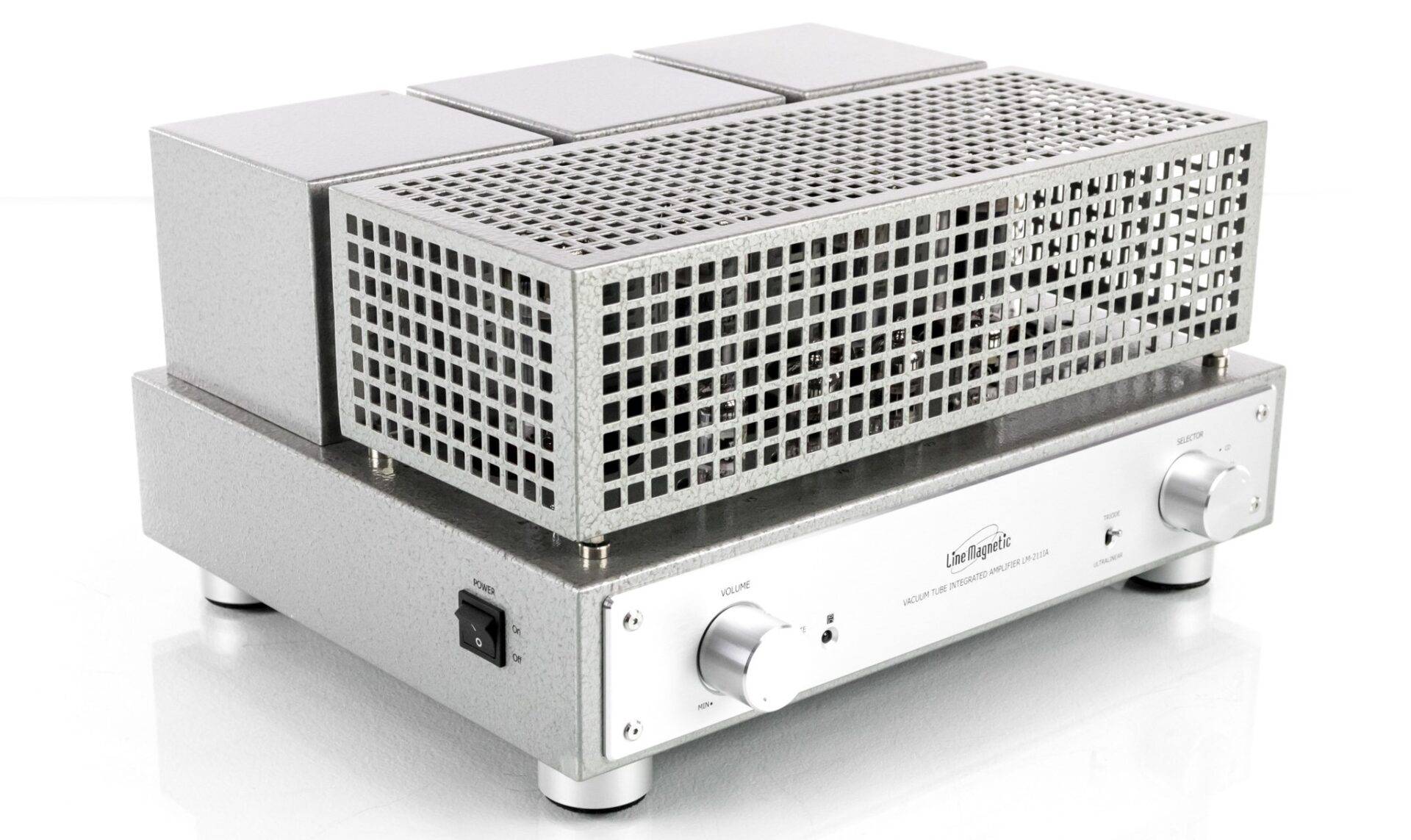
An album that has recently gained favour around the Witchdoctor castle is Om’s Advaitic Songs, and I was keen to hear how the 211IA would handle heavier sounding music. Best described (by me at least) as a melding of drone-metal and stoner rock with Arabic tendencies, I highly recommend getting this album – the band’s fifth – on vinyl. It’s a handsome package with the music pressed on two 45rpm 12-inch discs, and to say the recording is very good is an understatement. My favourite track is ‘Gethsemane’ which features powerful full-scale drumming and a driving, rhythmic bassline along with some good heavy riffing. It’s reminiscent of certain work by mighty New Zealand bands HDU and Dimmer. I wondered if maybe I was expecting too much of the wee valve amp but when the track kicked in after its long intro, the soundstage was huge with exceptional channel separation, quick transient response and surprisingly solid, tuneful bass . The guitar was suitably meaty, riffing along hard and giving rise to unfortunate munter-like urges. Sure, I couldn’t feel the bass or the hard hitting drums vibrating through the floorboards or damaging my internal organs, and I didn’t feel quite the same level of excitement swelling within the depths of my beer gut as I usually do but the performance was impressive nonetheless, especially at this price point. Although the LM held it together quite nicely at higher volumes, hints of brightness could creep in, as mentioned earlier, but this never detracted from my enjoyment of the music in any major way. I didn’t rush to turn the volume down; it was just something I noticed from time to time.
What I soon realised about the Line Magnetic was that it is very much a music lover’s amp. By this I mean that, while I could sit down with one of my more “audiophile approved” recordings and marvel at such things as the air between performers, the lifelike dynamics and so forth, I could also switch to less than perfect records and still get the same level of enjoyment. Songs, such as ‘The Classical’, ‘Hip Priest’ and ‘The Man Whose Head Expanded’ by The Fall – not to mention my personal favourite ‘No Bulbs’ – may sound a bit cacophonous to some ears but the LM managed to maintain a sense of order, allowing me to fully enjoy the eccentricities of the irascible Mr. Mark E. Smith. Likewise with The Clean’s catchy and exalted ‘Anything Could Happen’ which, incidentally, was recorded by Chris Knox on a Teac four-track (and it shows) in a small wooden hall. The music was fun, fast and thoroughly enjoyable, which is entirely the point. The beautifully full-bodied acoustic guitar intro was suitably jangly, and the drums and bass kicked in with a satisfying flurry. The vocal was a little thin but this was definitely down to the recording and besides, that’s the character of the era/scene we know and love and I wouldn’t want it any other way. This is an amp that will let you play whatever you like without being too fussy or pedantic about your record collection.
If you’ve ever read any of my other reviews then you may think that by now I should be well sick of Pitch Black’s Rhythm, Sound and Movement album but in fact the opposite is true. Every time I hear this ridiculously good electronic/dance album in a different system, I seem to hear things in slightly different ways – details I hadn’t heard before or more emphasis on different areas of the music. What I like about Pitch Black recordings is that they don’t seem to have been made in someone’s bedroom on a laptop. Rather, they sound like they have been created and recorded via a massive PA system in a large nightclub, which makes a lot of sense to me. So while few, if any home audio systems are likely to be able to entirely reproduce the sound of a nightclub environment cranking at full volume, you should be able to get a good impression of what is going on using any half decent stereo. The 211IA certainly gave the album a good and enjoyable crack. The all-important bass was swift and clear, if not entirely rib-rattling and the listening room was full to the brim with glorious sound. I seemed to be able to pick out little details – blips and percussion sounds and the like – and indeed heard a few things I hadn’t managed to focus my attention on in other systems. It was very hard to tear myself away to perform more domestic and sociable tasks.
While Triode mode lacked the raw power and punch of Ultralinear, it sounded somehow smoother; more silky and relaxing. Obviously there wasn’t really enough power to properly drive the Spendors, but I got a reasonably good impression none the less. Although the bass seemed a little looser – in that there wasn’t the same control of the lower frequencies as before – the sound was still pretty punchy and the finer subtleties of the music were in no way lacking, and there seemed to be more of that archetypal lovely golden lushness one would normally associate with valve amplification. In fact the 211IAs Triode mode almost made Ultralinear sound solid state, and I would’ve liked to have had some more efficient speakers on hand as I felt I could really spend a lot of time with it.
Conclusion
What a pleasure the LM-211IA was to come home to after a day of slaving. It is, at least in my humble opinion, a thing of real beauty – pride of ownership is very high – and fortunately it delivers in sound quality, too. Sure you could get better resolution, greater detail retrieval or better bass response, but this amplifier has so many other charms going for it for such a reasonable price that it must be worth an audition. A phonostage might have been nice, but as most enthusiasts usually like to have separates anyway, it isn’t much of an issue.
The LM delivers a fairly well balanced sound and what it may lack in some areas, it makes up for in others, yet it’s a good honest all-rounder in terms of presenting different music genres. I will say that if you live on a solid diet of rock and metal then you may wish to look elsewhere for that hard hitting rock experience, but if you have more diverse tastes, as I do, then I think you’ll be extremely happy; a bit of jazz, a bit of stoner-doom, a bit of electronica, you can’t go wrong. Conversely, if you live on, say, a jazz or acoustic staple and your budget falls within the $2k – 3k range then this has to be an amp for you to seriously consider.
The stock valves actually sound really nice, but the beauty of these things is that individuals can tune the amplifier to their own tastes by introducing different valves – and there is a plethora to choose from.
I really struggled to find anything seriously wrong with the Line Magnetic and I often forgot that I was supposed to be reviewing it; it was such a delight to listen to. But surely that’s the sign of something really good? So would I have one? You bet I would. ANDREW BAKER
Description
The Line Magnetic integrated amplifier LM-211IA is a push pull amplifier with 4x EL34 tubes in Class AB amplification and delivers
2x15W in triode mode and
2x32W in ultra-linear mode.
It has 4 balanced line inputs and 4/8Ω output groups.



